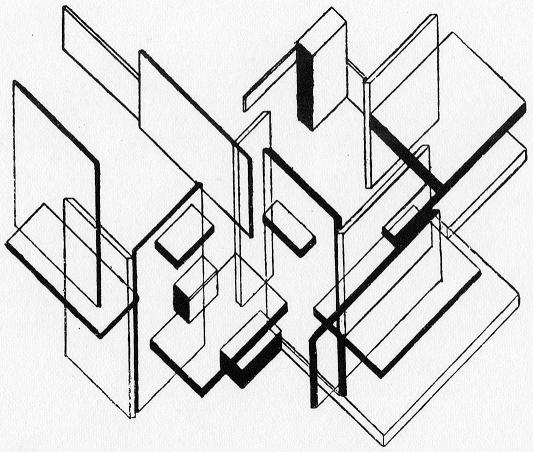Description
The work "architectural analysis" of 1923, created by Theo Van Doesburg, stands as an icon of the STIJL movement, which sought the harmonization of aesthetics and functionality through simplicity in the form and purity in color. Van Doesburg, co -founder of this movement along with Piet Mondrian, uses in this painting its characteristic approach to abstraction, a style that focuses on geometry and reduction to the essential, using straight lines and a primary color palette combined with gray and blacks.
The composition of "architectural analysis" is a paradigmatic example of how Van Doesburg transforms architectural representation into a game of plans and lines. Instead of presenting a specific structure, the artist decomposes the architectural elements in simple and colorful forms, creating a visual dialogue that evokes both modernity and functionalism. The rectangles and squares, which seem to float on the surface, challenge the gravity and traditional perception of architecture, suggesting a new reality in which space and structure become dynamic entities.
The use of color in this work is particularly remarkable. Van Doesburg adopts a limited palette, based on primary colors such as blue, red and yellow, which are contrasted with neutral gray and black tones. This contrast not only brings dynamism to the composition, but also reflects the influence of Cubism and futurism, movements that preceded and that of Stijl absorbed and reinterpreted. The choice of color here is not merely decorative; Each tone seems to have a specific function, contributing to the stability and visual balance of the work, and suggesting a sense of order in the chaos of the modern world.
Although "architectural analysis" lacks human figures or characters, the work invites the viewer to interact in a very personal and introspective way. The lack of figurative elements reinforces the emphasis on the abstraction and depersonalization of art, a principle loved by Van Doesburg. In this context, the work becomes a space where the viewer can contemplate his own relationship with the architectural environment, as well as his emotional reaction to modernity.
Van Doesburg's importance in art history should not be underestimated. His work, which covered from painting to design theory, influenced numerous fields, including architecture and graphic design. "Architectural analysis" is a reflection of his holistic vision, where art and daily life are intertwined. This multidimensional approach, which seeks to transcend the limitations of traditional art, transforms the work into a precursor of contemporary design concepts, anticipating minimalism and modern architecture.
Thus, "architectural analysis" is erected not only as a work of art, but as a visual manifesto that encapsulates the essence of a time that seeks to break with the past and embrace the future. Theo Van Doesburg, through this painting, invites us to rethink our perception of architectural space and its relationship with art, generating a permanent dialogue between the visual and the structural. This analysis of the figure and the form becomes a celebration of modernity that continues to resonate in our contemporary lives.
KUADROS ©, a famous paint on your wall.
Hand-made oil painting reproductions, with the quality of professional artists and the distinctive seal of KUADROS ©.
Art reproduction service with satisfaction guarantee. If you are not completely satisfied with the replica of your painting, we refund your money 100%.

